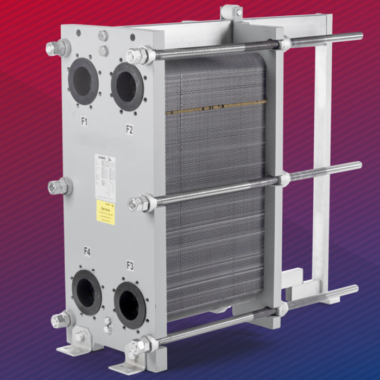Induced Draft Crossflow Cooling Tower
Induced Draft Crossflow Cooling Tower
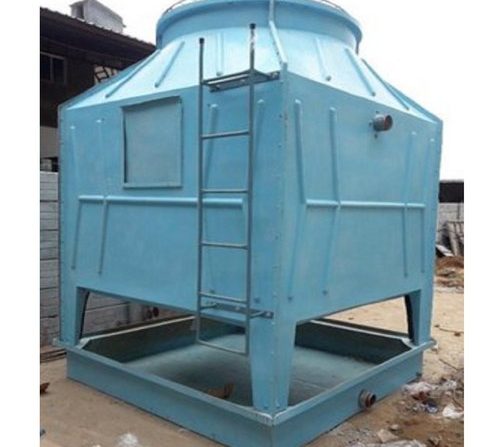
Induced Draft Crossflow Cooling Tower There are several main cooling tower categories, these are either:
- Natural Draft
- Forced Draft
- Induced Draft
And:
- Cross Flow
- Counter Flow
Cooling towers are a combination of these categories. For example, this 3D model shows a cross flow induced draft cooling tower although counter flow induced draft cooling tower and Natural draft counter flow cooling towers are also common.
Induced draft cooling towers are furnished in two types, based on the direction of air flow relative to the water flowing through the tower: cross flow or counter flow induced draft cooling tower flow. In the cross flow cooling tower, the sides are entirely open; and air is passed through the sides to a central plenum chamber, across the downward flow of water, and exhausted through the top of the structure by one or more fans. Some characteristics of cross flow towers, compared to counter flow towers, are
The contact surface is less effective.
The air flow quantity is greater.
Icing is more of a problem in winter months.
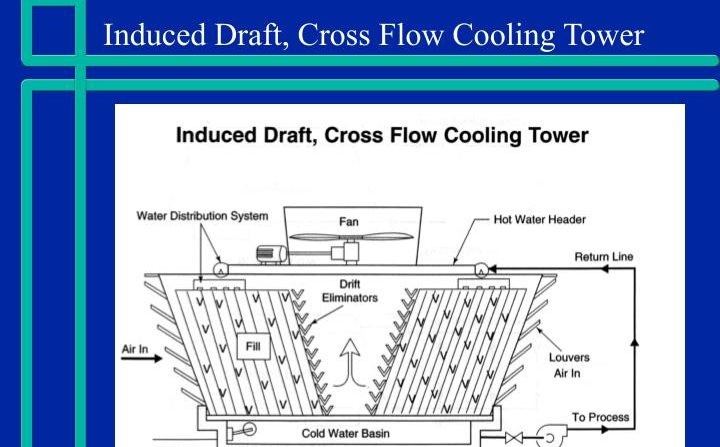
Induced Draft Crossflow Cooling Tower
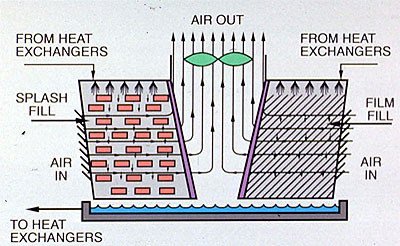
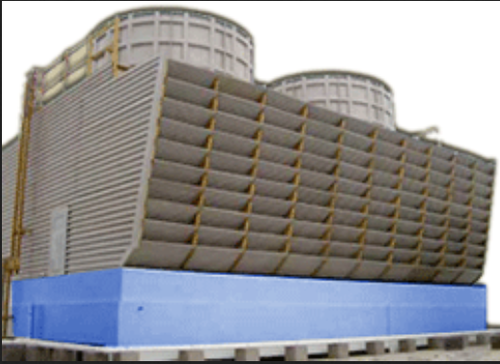
The fan horsepower may be higher.
The counter flow tower has straight enclosed sides, except for an air entrance near the bottom. Air is taken in at the bottom of the tower, raised counter current to the downward flow of water, and exhausted at the top by means of one or more fans. Some characteristics of counter flow towers, compared to cross flow towers, are
- Lower air flow quantity.
- The fan horsepower may be lower.
- Generally, lower fire protection cost.
- Usually, lower pumping height.
The water flows vertically through the fill, while the air flows horizontally, across the flow of the falling water. Because of this, air does not pass through the distribution system, permitting the use of gravity flow hot water distribution basins mounted at the top of the unit above the fill. These basins are applied on all crossflow towers.



